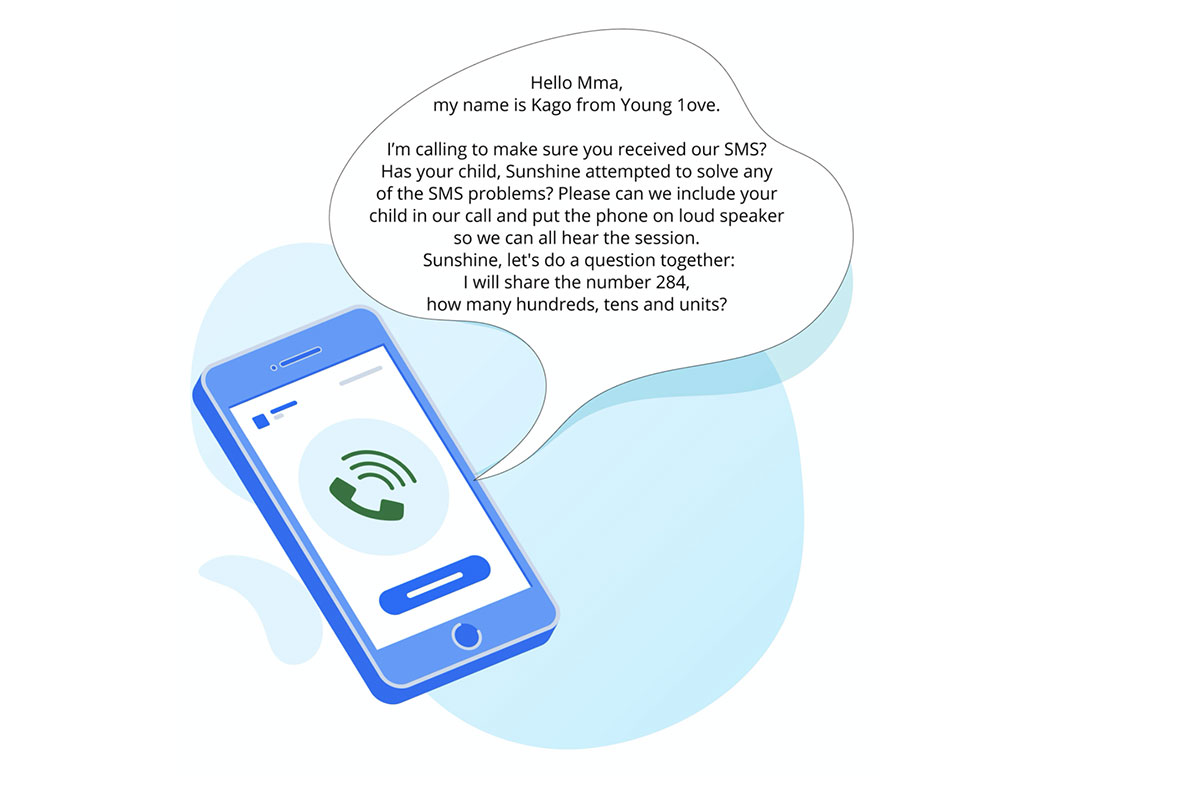New York Times columnist Tina Rosenberg has spotlighted a recent study co-authored by Teachers College education economist Peter Bergman, in which inexpensive mobile phone technology was successfully used to provide education to children in Botswana during the COVID pandemic last spring.
[Read Rosenberg’s column in the Times. Read the full study co-authored by Bergman; Noam Angrist, Co-Founder and Executive Director of Young 1ove, a Botswana-based nongovernmental organization; Caton Brewster, a data analyst at Young 1ove; and Moitshepi Matsheng, co-founder of Young 1love and Board Chairperson of the Botswana National Youth Council.]

STAYING ON MESSAGE TC education economist Peter Bergman has designed a number of experimental interventions to improve students’ academic performance using text messaging. (Photo: TC Archives)
The study of primary school-aged children in 4,500 families — published by The Centre for the Study of African Economies — provides some of the first experimental evidence on strategies to minimize the fallout of the pandemic on education outcomes. It compares two low-tech mathematics interventions provided by the Botswana-based nongovernmental organization Young 1ove. One group of randomly-assigned children received weekly text messages with a numeracy “problem of the week,” while another received both these texts and live walkthroughs of problems via 15-20-minute phone calls. With more than one-third of fifth-graders in Botswana unable to do subtraction, the problems were simple (example: “Sunshine has 23 sweets. She goes to the shops to buy 2 more. How many does she have altogether?”). The text communications and phone-walkthroughs were specifically designed to be comprehensible to parents, whose involvement is considered crucial, even when they themselves are not mathematically literate.
[Bergman, Associate Professor of Economics & Education, has designed a number of experimental interventions to improve students’ academic performance using text messaging. Read an opinion piece by Bergman on the impact of text messaging students. Read a story about Bergman discussing, on NPR, an earlier study he conducted on the impact of text messaging to students’ parents.]
In Bergman's study, the group that received both texts and phone walk-throughs saw a 52 percent decrease in the share of students who could not do any numerical operations on a standardized test and a 24 percent gain on “average numerical skill.” Roughly two thirds of families engaged with their child on educational activities per week — a 10-18 percent increase.
The results were striking. In the group that received both texts and phone walk-throughs, there was a 52 percent decrease in the share of students who could not do any numerical operations on a standardized test and a 24 percent gain on “average numerical skill.” Roughly two thirds of families engaged with their child on educational activities per week — a 10-18 percent increase. “We find that, instead of crowding out other educational activities, the interventions crowd in more educational interaction as some parents spend more time with their children on educational content,” the authors write.
Rosenberg, a Pulitzer-prize winning journalist, notes that at one point in recent months, schools were closed for over 1.6 billion children. “If schools across the United States return to ‘normal’ in January, the average student will have lost nearly seven months of learning,” she writes. “But the low-income students among them will have lost more than a year.”
If schools across the United States return to ‘normal’ in January, the average student will have lost nearly seven months of learning. But the low-income students among them will have lost more than a year.
— Tina Rosenberg, The New York Times
The impact of COVID on education is even more dire in low-income countries, she adds, and — according to the World Bank — could ultimately cost students $10 trillion in earnings over the course of their lifetimes.
For their part, the authors conclude that their findings “have significant implications for global policy,” particularly in low- and middle-income countries where internet access is often low but between 70 to 90 percent of households own at least one mobile phone. “Moreover,” they add, “school closures occur in settings beyond the current pandemic.”
